A Brief History Of Human Communication
From orality to literacy and back again
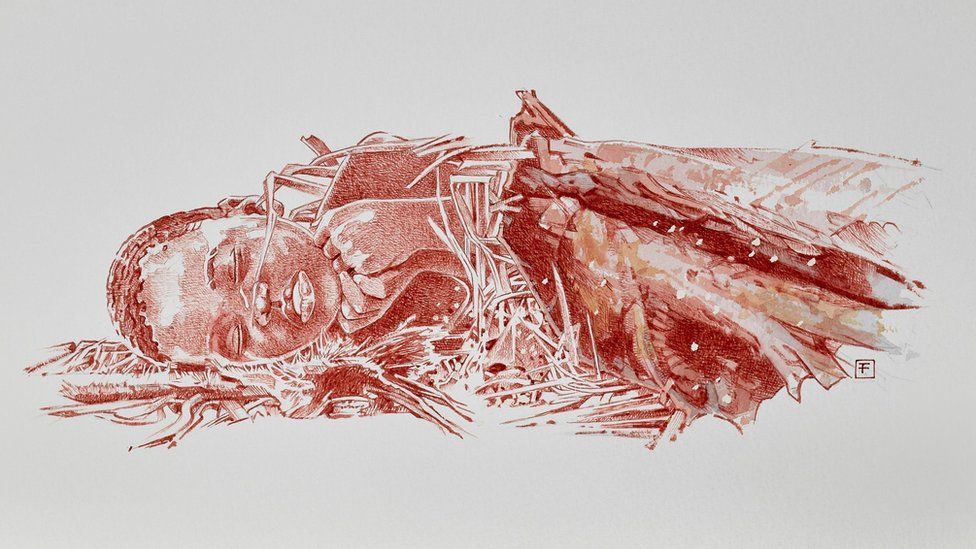
This is a lecture I gave to a group of young people in a political training academy we run in Sri Lanka. Sorry I'm resending this, the preview shows webp images but the email doesn't.
Humans have communicated for hundreds of thousands of years. Most of that communication was NOT through social media, TV, or even writing. It is important to understand this deep history of communications to understand anything today.
In this article we will talk briefly about four stages of human communication.
- Ritual
- Talking
- Writing
- Talking Again
1. Ritual
What's the oldest communication? What's older than all literature, art, and stories? What has communicated across billions of people and hundreds of thousands of years? It's funerals.

Buried here is a three-year old child. Nearly 80,000 years ago, this child's family carefully wrapped them in cloth, put their head on a pillow, and laid them to rest safely in a cave. This was a funeral ritual. The fact that they gathered to do it makes it ritual communication. The fact that we're talking about it now makes it incredibly powerful. The message is simple but strong. We loved this child.
This is the power of ritual, specifically ritual burial. The earliest evidence for humanity isn't art, it's these ritual burials. Instead of just abandoning bodies, we take care of them, we clothe them, we even bury them with precious goods. Funeral rituals are the strongest form of communication known to humans. Take, for example, pyramids.
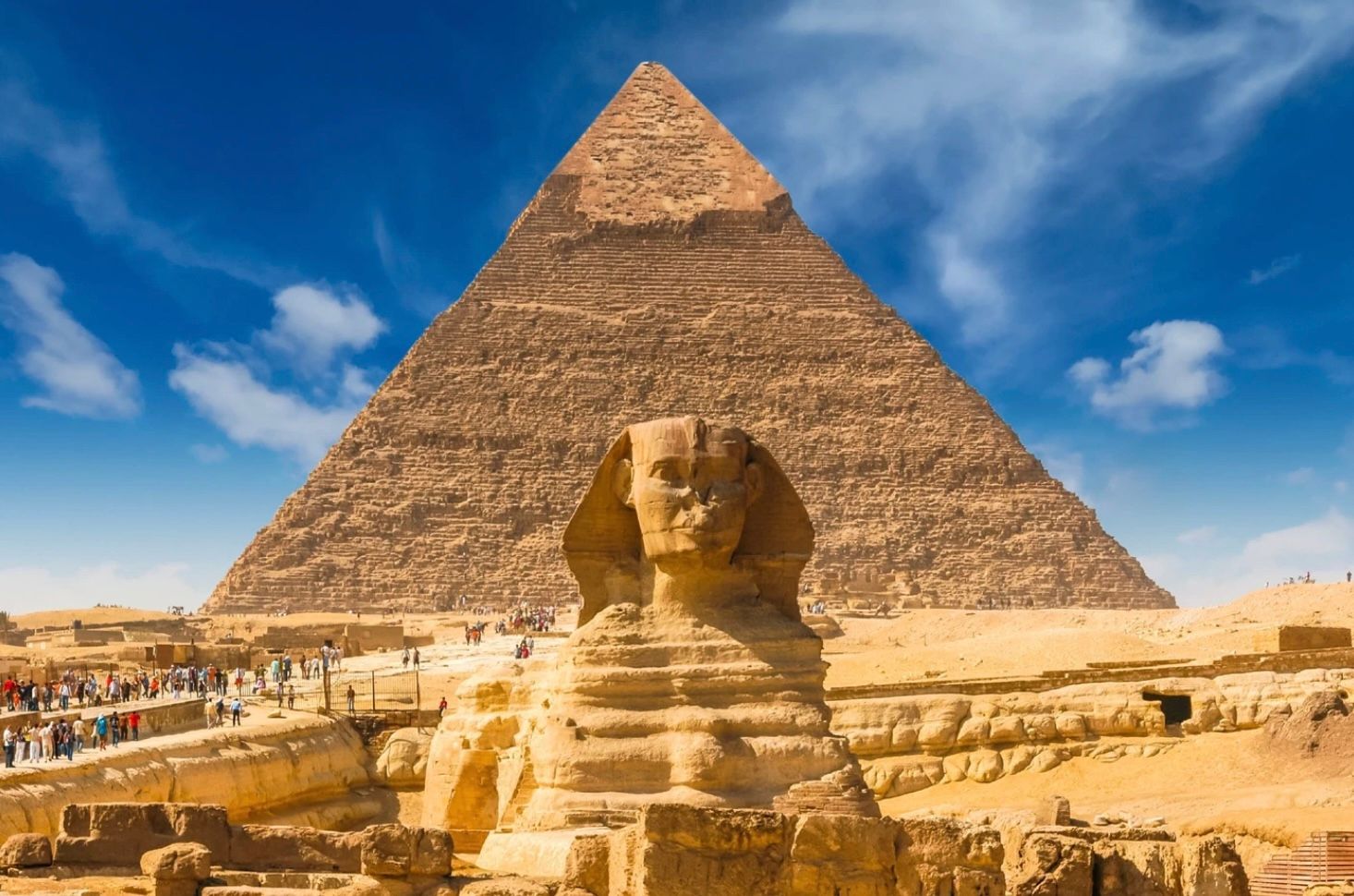
A pyramid is just a giant funeral ritual. They told everyone in Egypt that this person was important, and they still communicate today, thousands of years later. This is the amazing power of ritual communication.
So remember that next time you're feeling bored at a funeral and looking at your phone. Everything you do on your phone will disappear, but 100,000 years later, people will find our graves and remember this: we care for our dead. That's why it's important to go to funerals. It's the oldest and strongest form of communication.
2. Talking (Orality)
For most of human history and your own life, communication is talking. For 99.9% of human history, this was popular culture. This is what the scholar Walter Ong called a primary oral culture. An oral culture is based on sound. Ong says that in order to understand this, it's important to think about sound. Just say a word out loud and see how long it lasts.

Sound is interesting because it's always disappearing. Before you say the word 'sound', it's already gone. How did anyone build a culture around something that disappears?
People did it by telling great stories, repeating themselves constantly, and talking about humans, animals, and situations that everyone could understand. According to Ong, some characteristics of oral culture are:
- Repetition (telling the same parts of stories over and over again)
- Example: The Bible. The story of Jesus is told four separate times (Matthew, Mark, Luke, and John).
- Tradition (telling the same old stories over and over again)
- Example: The Ramayana. The Ramayana has been retold from across India to Thailand.
- Close to the lifeworld (telling stories with human-like creatures in them)
- Example: Hinduism: complicated concepts are explained using human-like gods and animals.
- Situations not abstractions (like Jesus's parables)
- Example: Jataka Stories: Buddhist philosophy is explained with simple stories.
In Sri Lanka we can see the change from oral to literal culture (from talking to writing) in the Mahavamsa. The Mahavamsa was written down, but it came from an oral culture and it directly talks about many of the things Ong was talking about. For example, the Mahavamsa was trying to say that it was better than the Dipavamsa, which it called repetitive. It still, however, talked about being handed down through tradition.

According to Bhante Rahula, the Mahavamsa also focused on the lifeworld of humans (what he calls "animal talk") and the very real situations of kings and queens.

Like ritual, it is important to remember that oral communication has worked very well for much longer than writing even existed. It's easy to think that what a politician does is write laws, but most of the time they're actually talking to people, giving speeches, going to meetings, talking on TV. A politician actually spends most of their time in an oral culture, which is why it's so important to understand.
You can communicate any way you want, but what has worked since the ancient times is:
- Stories
- With people in them
- Doing interesting things
- Repeated over and over
This sort of communication is able to reach across entire populations and even thousands of years. Let me give you one example. This is the story of a giant bird.
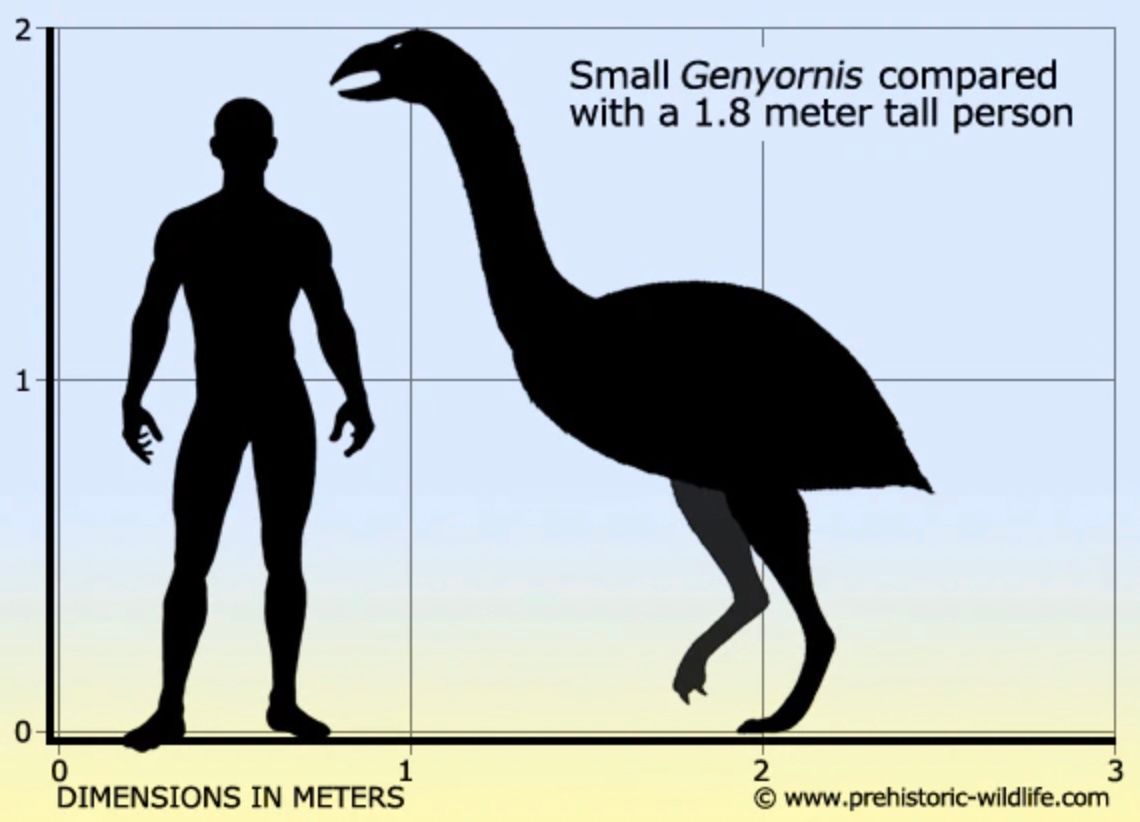
How do we know about this bird? We found fossils, but well before that people were telling stories. The Tjapwurung people of Australia were talking about this giant bird called මිහුරුන්ග් පරින්ග්මල් / மிகுரங் பரிங்மள் for thousands of years. This is the story they told:
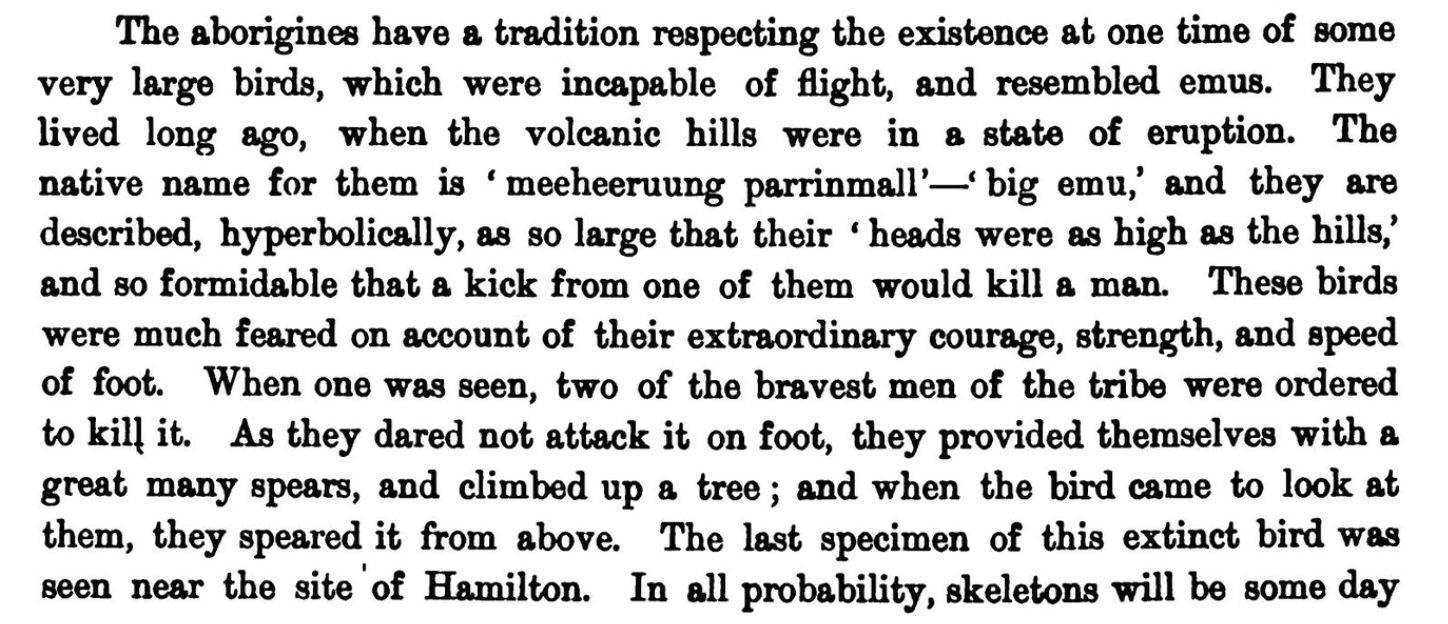
This story has been told for thousand of years, finally reaching you today. That's the power of oral culture. Don't underestimate it.
3. Writing (Literacy)
Today we live in a world of writing. It's important to remember that writing is a technology, like a computer. For most of its history, it wasn't even very popular.
In ancient Sumeria writing was used for keeping accounts (this much grain, this much money). In ancient Egypt it was used for that and rituals (including writing inside of pyramids). While some laws were written down (like Hammurabi's Code) reading and writing were still a specialized job, like being a computer programmer today.
A lot of people also didn't like writing at all. Socrates said that writing would make people stupid and annoying. People say the same things about modern technology. This is Socrates speaking in Phaedrus:
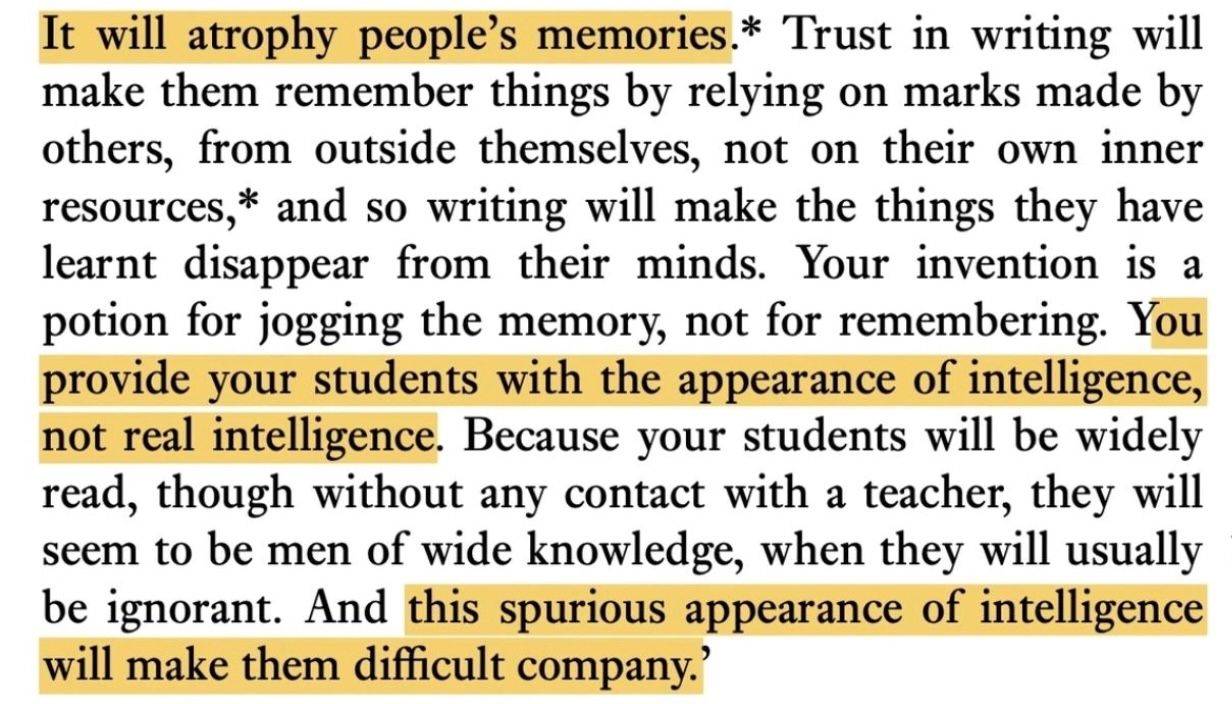
Today we complain that people don't read enough books, but Socrates said that books would make them dumb (of course we only know this because Plato wrote things down). Writing was still very powerful. It just wasn't very popular.
This continued for thousands of years, largely because writing remained expensive and difficult. "In the physical act of writing, the medieval Englishman Orderic Vitalis says, ‘the whole body labors'" To write you would have to scrape animal skins, sharpen goose feathers, string leaves together, wait a thousand years for Chinese paper to spread. It was a lot of work. For much of human history writing remained even more rare than computer programming and books were expensive and hard to find.
Print changed many of these things, but orality still remained dominant. People would still attend lectures where one person read out loud from one book. People would still 'audit' account books by using their 'auditory' sense. They would listen to them being read out loud. As Ong wrote, "Written material was subsidiary to hearing in ways which strike us today as bizarre. Writing served largely to recycle knowledge back into the oral world."
How Writing Changes Thought
Writing still changed the world. Remember that Ong talked about oral culture being based on sound. Literary culture is very different. It's based on sight. He said "the shift from oral to written speech is essentially a shift from sound to visual space."
This was a very powerful shift. Remember that we spoke about four aspects of oral culture, which are all based on sound. Vision changes everything.
- Repetition?
Sound only goes forward, but you can just look back in a book. Why repeat yourself? - Tradition?
Sound means only a few stories will spread because people just can't remember that much. But readers don't need to remember anything, they can just look. Why not write something new? - Close to the lifeworld?
Sound is always spoken to someone, it is communication between living beings. Books are dead. As Henry Vaughn said "every book is thy epitaph." - Situations not abstractions?
Oral culture has no how-to-manuals (anyone close enough to tell you something would just show you). But text can support lists, abstract concepts, etc.
Print made all of these effects stronger. Suddenly books were everywhere, they were perfect copies of each other, and they were talking about everything. Suddenly even money way printed. This didn't just change communication. According to Ong "more than any other single invention, writing has transformed human consciousness."
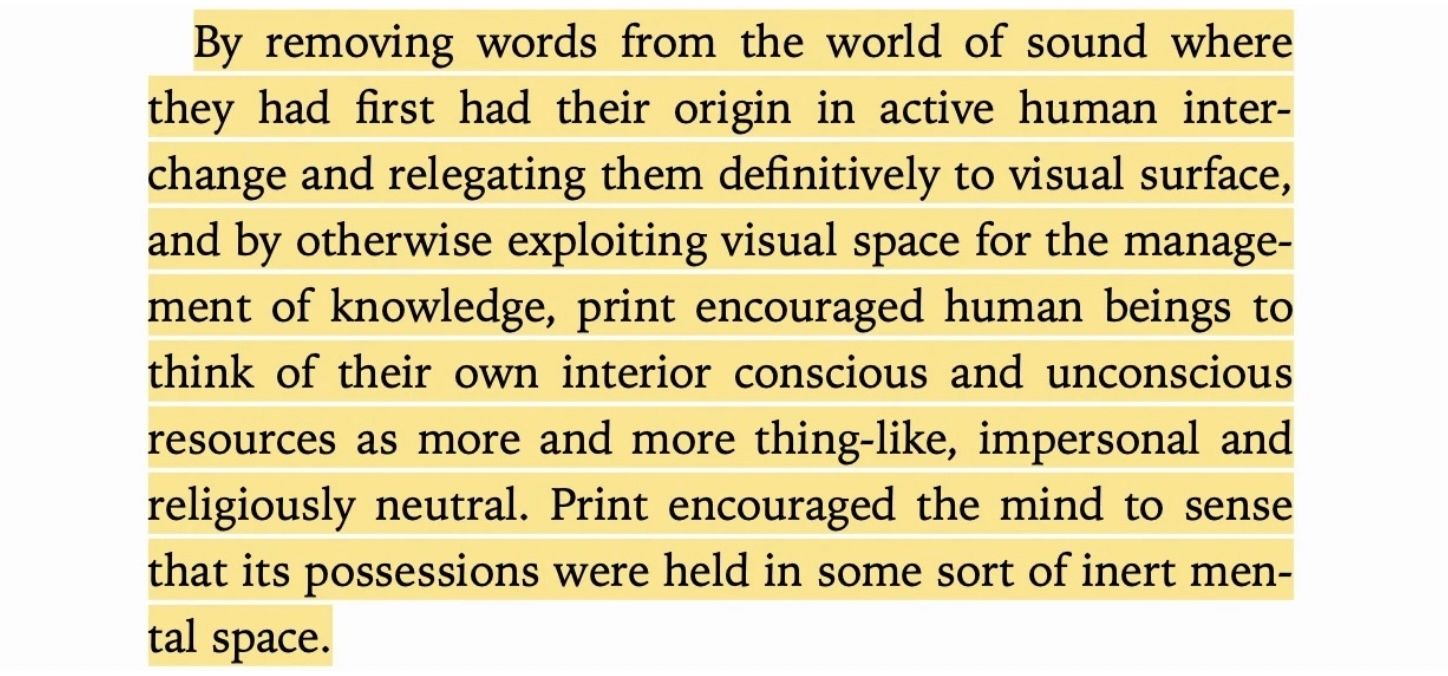
What Ong said is that writing (and print) changed our orientation from each other to ourselves. From stories to 'facts'. From the natural to the artificial world.
4. Talking Again (Secondary Orality)
Remember how I said that writing was limited by being expensive and difficult? Now writing is cheap and easy. If you use social media or messaging you could write a hundred messages a day, but they all effectively disappear. If you use Snapchat your messages do disappear and on other platforms there are simply so many messages that they all disappear into noise. This world of fast, easy, disposable text is actually more like orality (talking) than literacy (writing).
Ong calls this secondary orality.
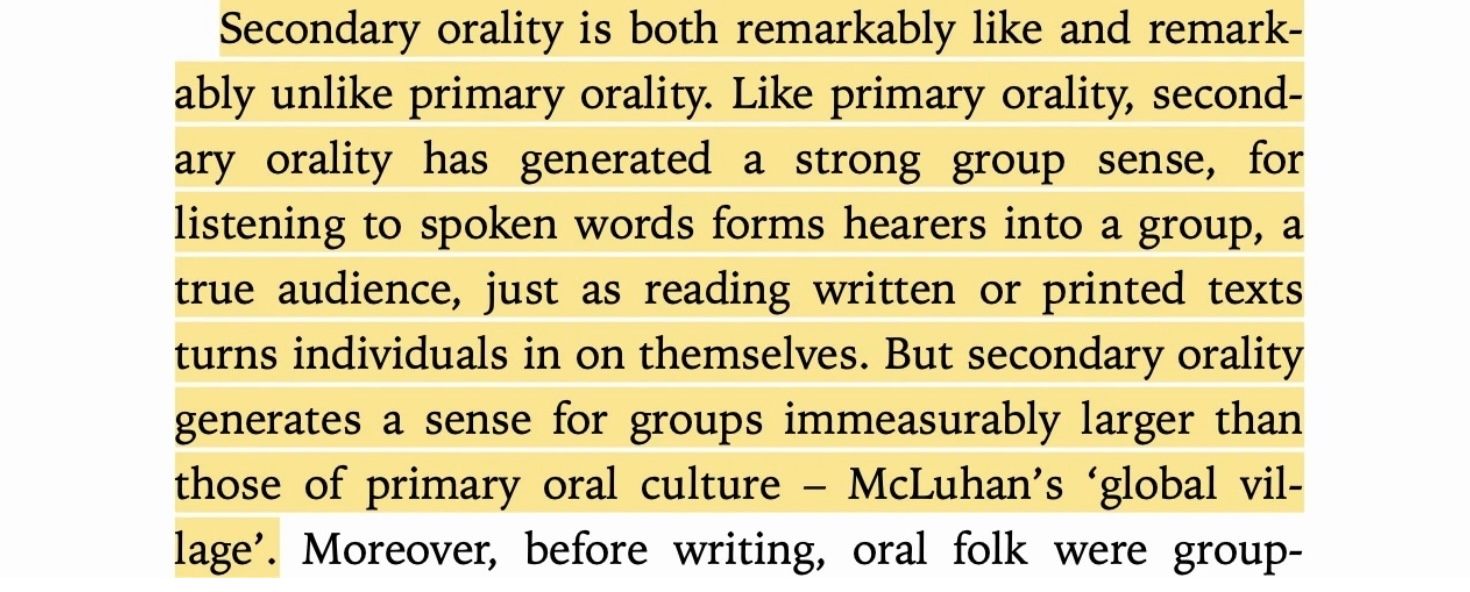
So we have gone from the village to the 'global village'. Even the ability of democracy to go from governing city states to governing over a billion people in India is largely connected to this technology. It lets a politican go from talking to maybe a thousand people to talking to millions at once.

Walter Ong wrote his book in 1982, before the Internet, social media, or texting even existed. But you can see how communication has now gone full circle. We're back in an oral age, except in a global village. And yet we have the illusion that we're in a literate world, because these ephemeral communications are digital (as in done through our fingers). But time is a cycle. That's why to understand today, you need to understand the communication history of the past.